100% New Mexico Initiative
100% POWER HOUR
100% Community Schools Project
PLEASE NOTE: This page contains supplemental information for attendees of the 100% New Mexico initiative Power Hours. Attendance is free, but registration is required. Please register here. This page also guides local readiness workshops for county initiatives.
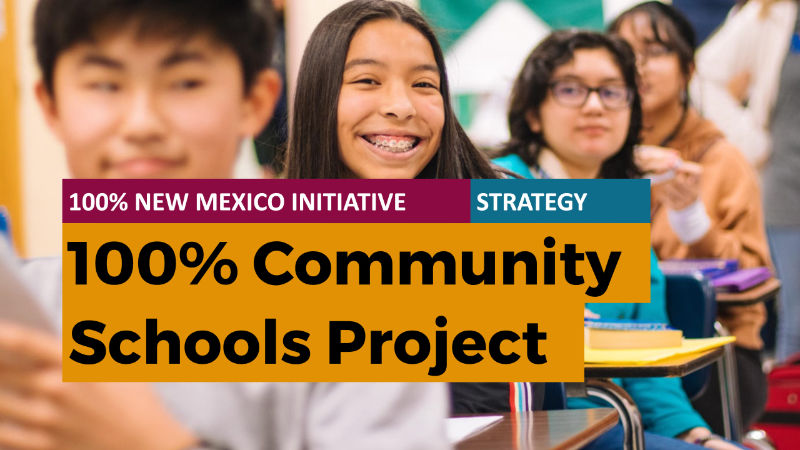
100% NEW MEXICO INITIATIVE: STRATEGY
Community Schools@100%
We are providing the slides and narrative text used in the 100% Community Schools Project webinar being offered by the Anna, Age Eight Institute. The webinar is designed to give 100% New Mexico initiative members an overview of key concepts and issues related to implementing the initiative in their county with a focus on strengthening the community schools model in each county. Currently ten counties are engaged in the initiative.
Webinar participants are encouraged to enroll in the 100% Power Hour webinar series for more background in the initiative. We also invite you to use this page for local presentations in order to increase public awareness of adverse childhood experiences (ACEs), trauma, social adversity and the data-driven prevention strategy of community schools.
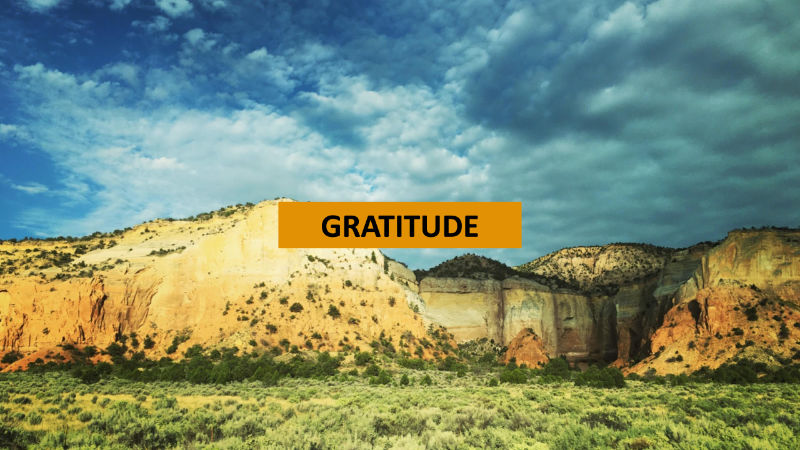
Before we begin our presentation, we want to allow for a moment of quiet reflection. Please take a minute to perform the self-care of your choice.

The learning objectives of the 100% Community Schools Project webinar are that participants completing the webinar will be able to describe an overview of: the 100% New Mexico initiative, health and safety challenges students endure; the impact of ACEs and trauma; the impact of social adversity on families, schools and community; the community schools model; the power of partnerships to enhance learning environments; funding streams and return on investment; and getting started.
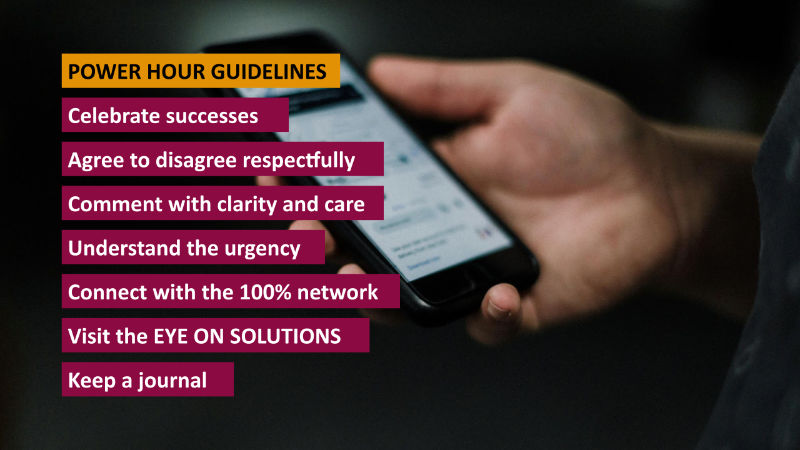
Participant Guidelines: The 100% Power Hour process is designed to create a vehicle for building awareness of the initiative and serve as a catalyst for ongoing local community dialogue. The presentation design follows the “teach the teacher” format, developed to allow participants to provide the presentation to their initiative members and local stakeholders. To create an environment for community dialogue, we offer simple guidelines.

Acknowledgements: We acknowledge the contribution of all initiative members across the state who have been part of the iterative process of developing the 100% New Mexico initiative to meet the unique needs of rural and urban families, as well as those serving culturally and economically diverse populations in the south and west. We also are grateful to the state and local lawmakers who have supported the initiative.

PART ONE: 100% New Mexico initiative: Challenges and Solutions
The 100% New Mexico initiative, like many health initiatives across the state and country, seeks to prevent the costly challenges that diminish the lives of children, students and adults. We don’t lack data that documents our students’ health and safety challenges. Every state department of health provides data on the incidence of illness, injury and violence, along with reports that detail our students’ troubling experiences with challenges outside the home. We don’t lack data to illustrate how many of our students are struggling with schoolwork or dropping out. We know the risk for ongoing substance use disorders, violence, untreated mental health challenges and joblessness.
We are united in ensuring that 100% of county residents have access to the ten vital services for surviving and thriving. This presentation will provide an overview of one of the three key strategies for empowering students and families called the community schools model.

The 100% New Mexico initiative is the centerpiece of the Anna, Age Eight Institute’s programming. It was developed by institute co-directors Katherine Ortega Courtney, PhD and Dominic Cappello who are the co-authors of Anna, Age Eight and 100% Community.
Anna, Age Eight: The data-driven prevention of childhood trauma and maltreatment guides communities in addressing epidemic rates of adverse childhood experiences (ACEs) that occur in the home and social adversity that families face outside their door. The book also addresses the role of schools in preventing adverse childhood experiences (ACEs) and trauma.
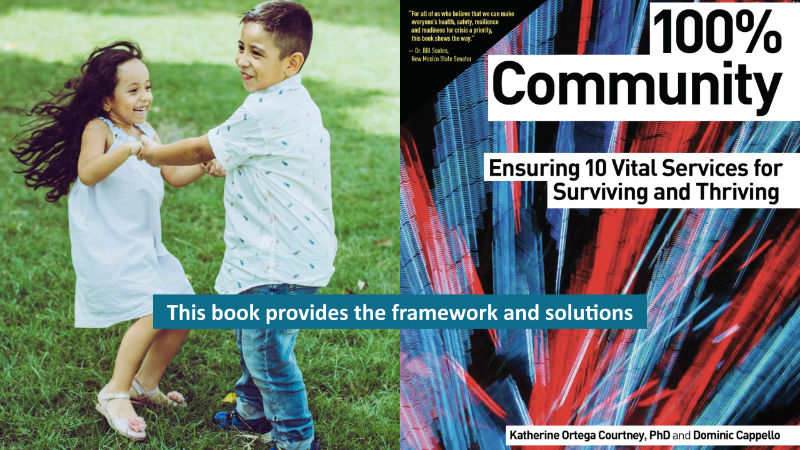
100% Community: Ensuring 10 vital services for surviving and thriving is the blueprint that 100% New Mexico initiative participants are using to assess barriers to vital service and build a countywide system of care that includes timely access to vital services. The book details how we collaborate to build the services in each county. One of the ten vital services would be a fully-resourced community school.
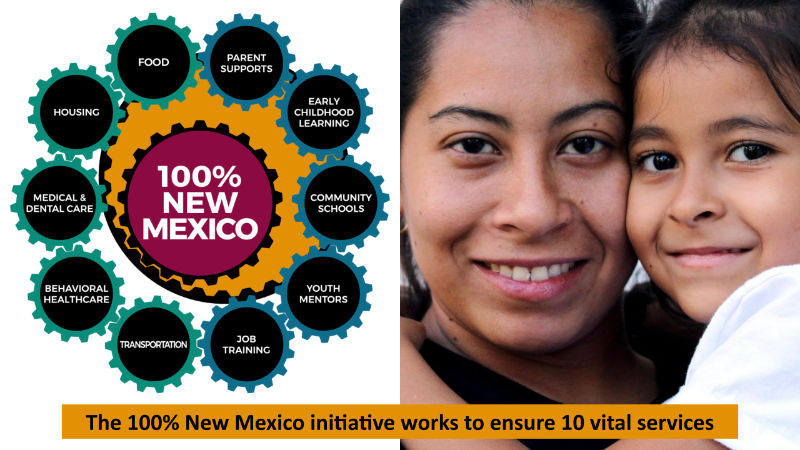
The 100% New Mexico initiative is working, county by county, to ensure the ten vital services for surviving and thriving. Our children, students and families can only struggle without these services shown to increase health, safety and resilience for residents of all ages. The initiative aligns the local work of county and city leaders committed to health equity and racial justice.
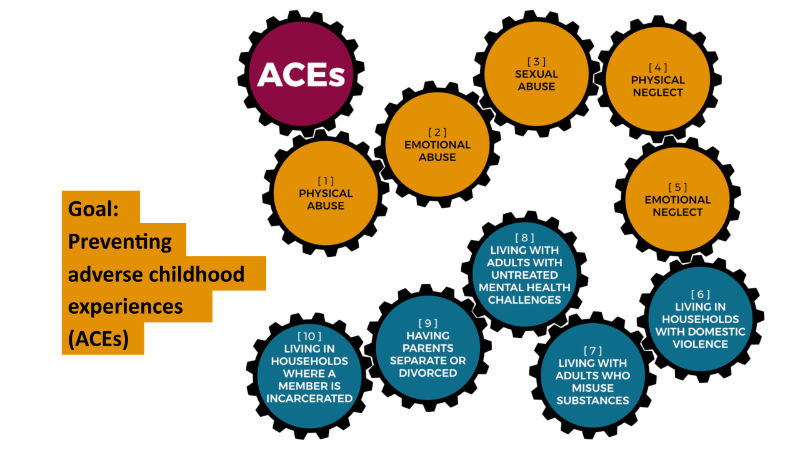
Adverse childhood experiences (ACEs) are ten forms of adversity, abuse and neglect that children endure in the home. As we begin, we wish to point out as many as a fourth to half our students are enduring the ten ACEs. Even those students who may be fortunate enough to score a 0 on the ten-question ACEs survey navigate a homelife, school and community of those with much higher scores.
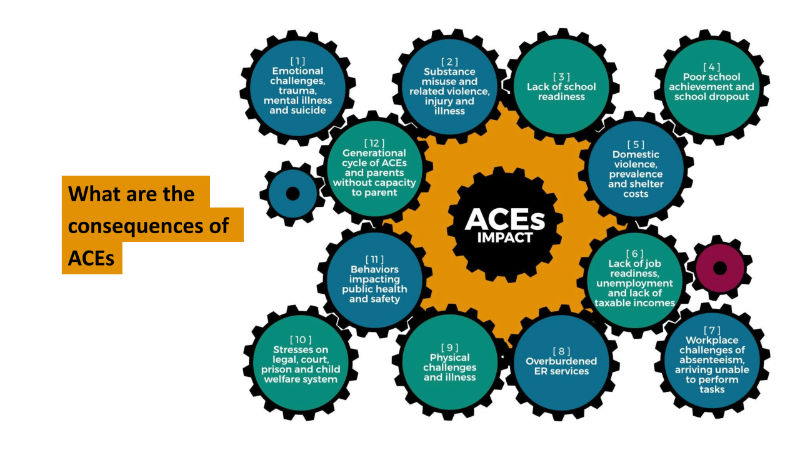
The impact of ACEs does not stay in the home. Almost all our costly health and social challenges can be traced back to ACEs, trauma and the ways people cope with damaged families. Adults with untreated trauma due to ACEs can struggle to learn, parent, work and become a contributing member of the community.
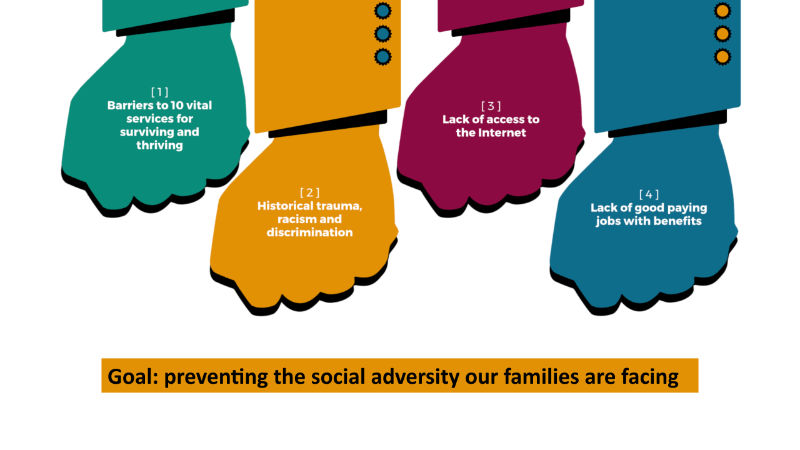
Social adversity arrives once one steps outside their door. Adversity in the form of service barriers, discimination, lack of access to the internet and living in areas without good paying jobs can diminish the lives of children, students, parents, caregiving grandparents and all county residents.
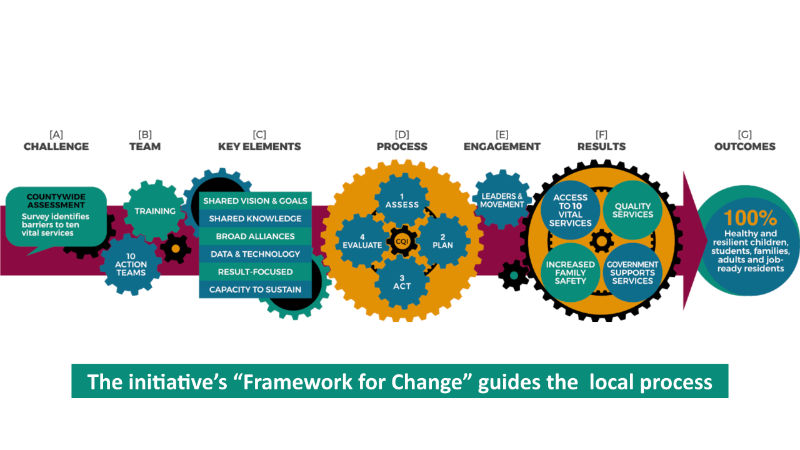
Our initiative is guided by a “Framework for Change.” In our “Framework for Change” action is the “D” part of the four-phase continuous quality improvement process. Action, including fundraising, is all part of the change process that leads us to “E” and engagement. This means leadership and a local movement committed to our desired result: 100% of our kids and families thrive.

The county initiative teams are building and strengthening relationships with a variety of partners on the state, county and city levels. The partners are key to securing funding and support for local 100% New Mexico projects.
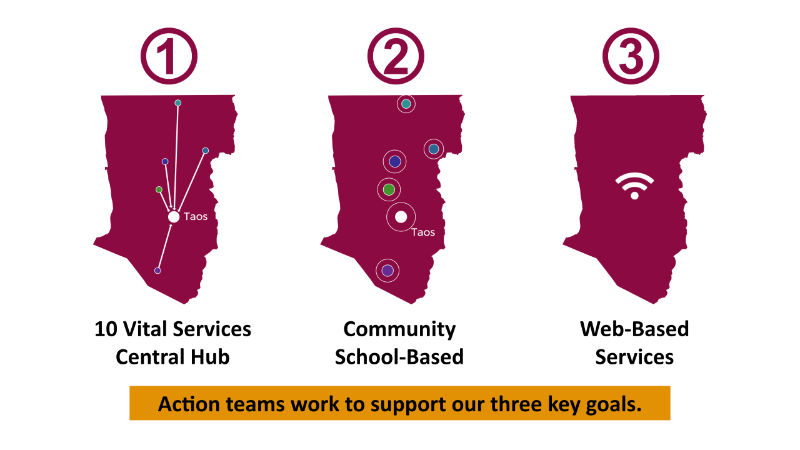
Change agents work on our three key strategies: 1) creating a 100% Family Center which is a “one-stop shop” and central hub for ten vital services, 2) making every school a fully-resourced community school which serves as a service hub with ten services, and 3) ensuring internet access across the county to make web-based services and supports a reality.
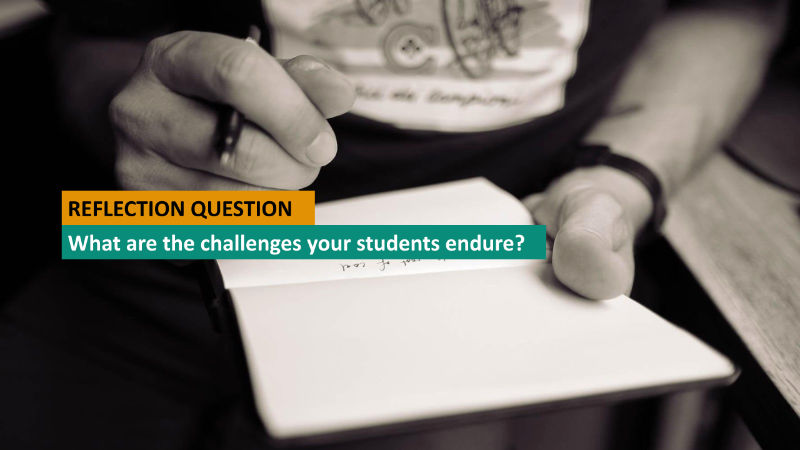
REFLECTION QUESTION: As you think about the problems and solutions presented in the initiative overview, take a few moments to reflect on the challenges your students are enduring.

PART TWO: How does the community school address student’s challenges?
There are important questions to ask, within the context of the 100% New Mexico initiative. A simple one is, “To what degree do your county’s students endure health, safety and economic challenges?” “What is the capacity of your local schools to prevent and treat challenges today?” “What is the willingness to discuss a lack of capacity?”
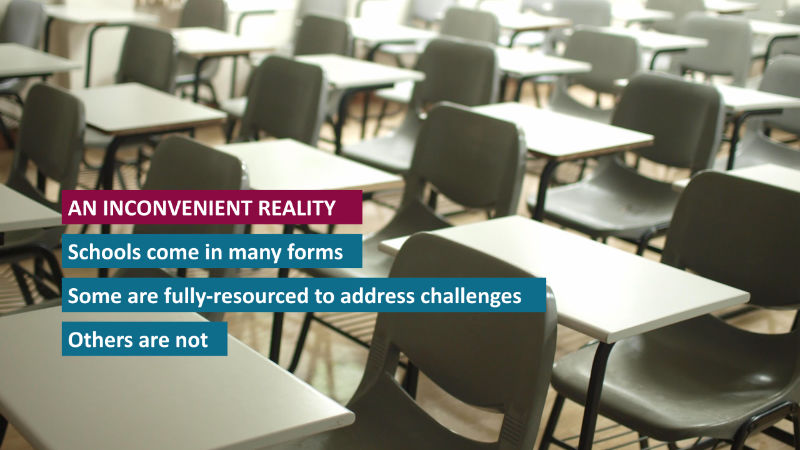
Part Two begins with an acknowledgement that not all schools are fully-resourced to address the challenges of ACEs and social adversity.

An assessment of our student’s emotional and physical health requires us to confront the impact of ACEs and trauma on all our students. We stress that students enduring high levels of ACEs may be in a near constant state of flight or fight, always waiting for the next abusive event to occur in the home. Traumatized students may think more about what problems await them at home, rather than homework.
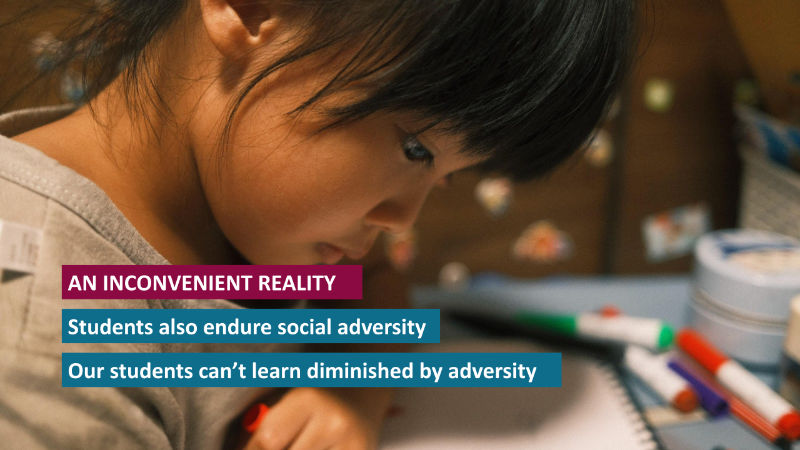
We must also be willing to assess the levels and form of social adversity that shape our students’ lives. Lack of access to vital services, historical disparities, historical trauma, racism, discrimination diminish our students. Lack of access to technology and a good paying local job also provide hardships for our families in rural and urban New Mexico.
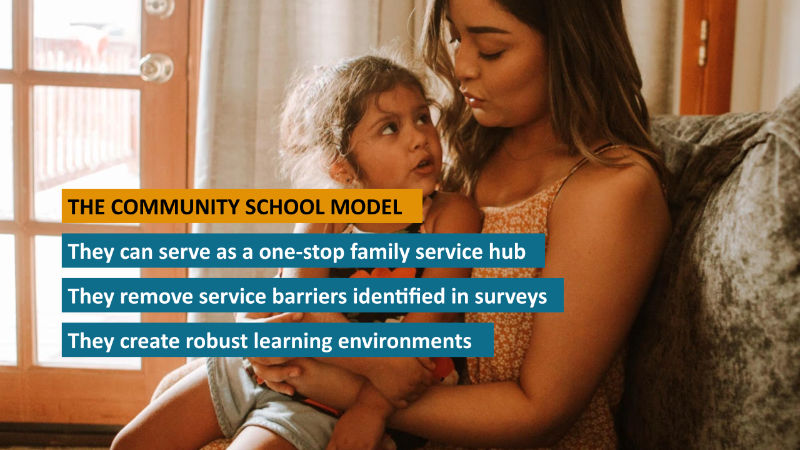
The community school model is one that can change an under-resourced school into a fully-resourced learning environment with all the services to address ACEs and social adversity.
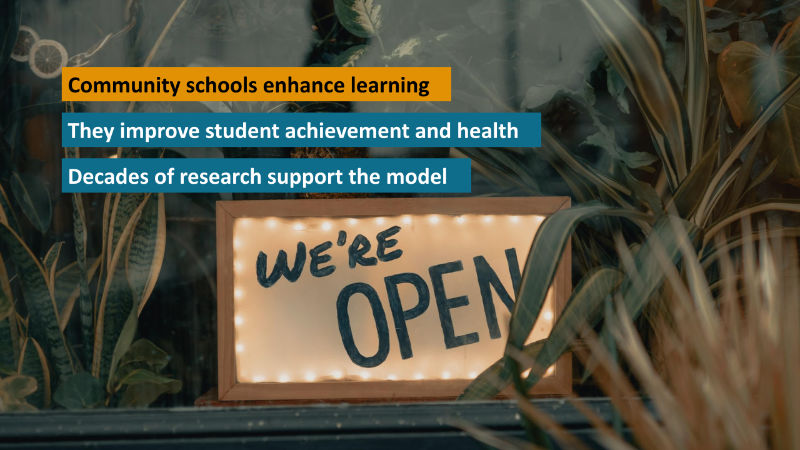
The community school model has decades of research to support its implementation. We encourage you to explore research in our “Social Adversity & Research” and “10 Sectors & Research pages on the Anna, Age Eight/NMSU site.
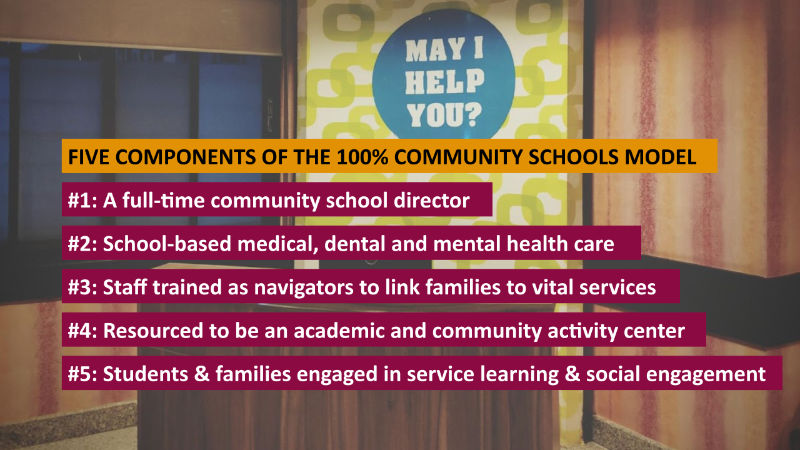
There are a number of models that guide the development and functioning of a community school. One model, promoted by the initiative as the 100% Community School, has five components:
- A full-time community schools director
- A school-based health center with medical, dental and mental health care
- Staff trained as navigators to link students and families to vital services
- Resourced with sustainable funding to be an academic and community activity center
- Students and families engaged in service learning and social engagement
We include school-based health care centers, along with medical and mental health care providers, in our 100% model because of epidemic rates of adverse childhood experiences among our student population.
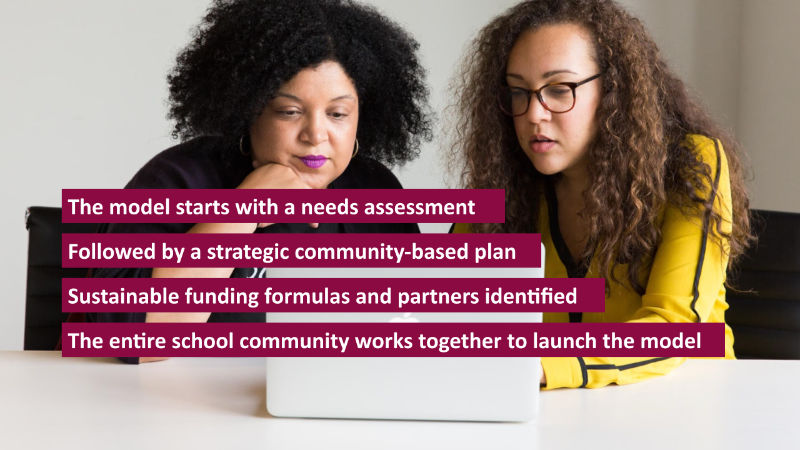
The model starts with a needs assessment, followed by a strategic plan that is community-based with involvement of all stakeholders. Sustainable funding formulas and partners are identified and the return on investment is clearly articulated. The entire school community works together to launch the model at the school.
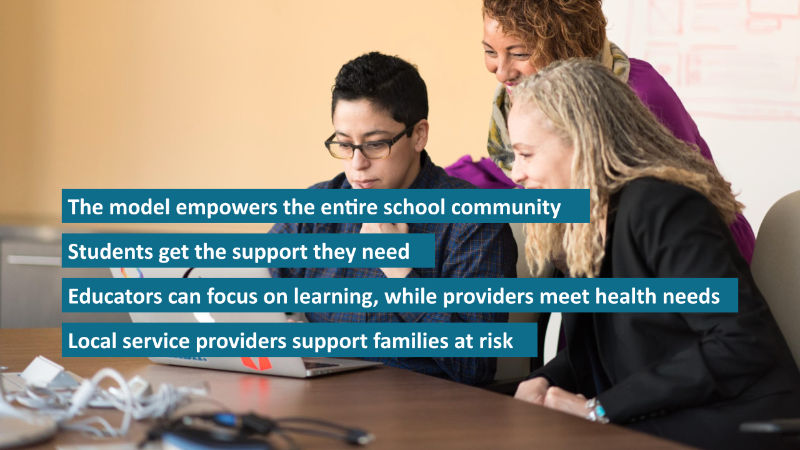
As the community schools remove barriers to vital services, the entire school community is empowered. Students get the support they need to achieve academically. Educators can focus on teaching and learning, while local providers meet health and safety needs. Local providers get a base from which to connect with students and family members, linking them to the services they can benefit from.

Community schools have an environment for family members, a hub.
- A space for parent support, workshops and networking
- An environment for the school community members to connect
The goal is to create a space within the school that says, “Welcome. How might we help you?”

The hub can serve as a base for all forms of gatherings and meetings.
- Professional development
- Workshops for students and family members
- A space for providers to connect and align school and community services
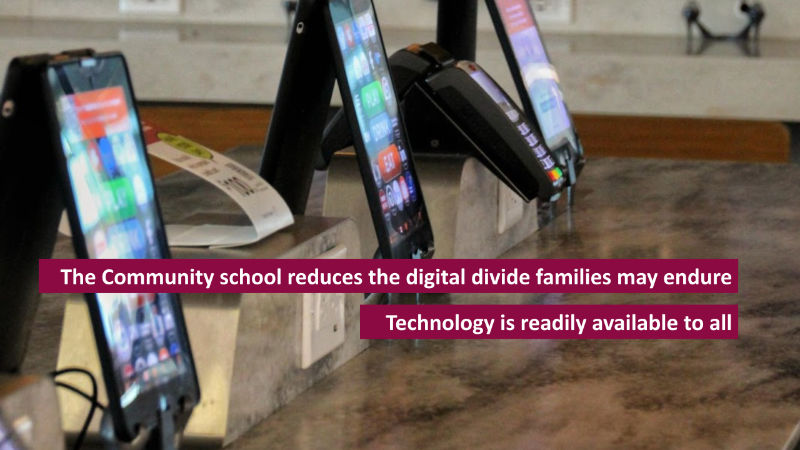
Community schools acknowledge the digital divide and ensure access to the internet for:
- Web-based services
- Academic support
- Public health information

PART THREE: Community schools and partnership
Community schools increase their capacity to serve students and families by strengthening partnerships with the organizations that provide the ten vital services for surviving and thriving.
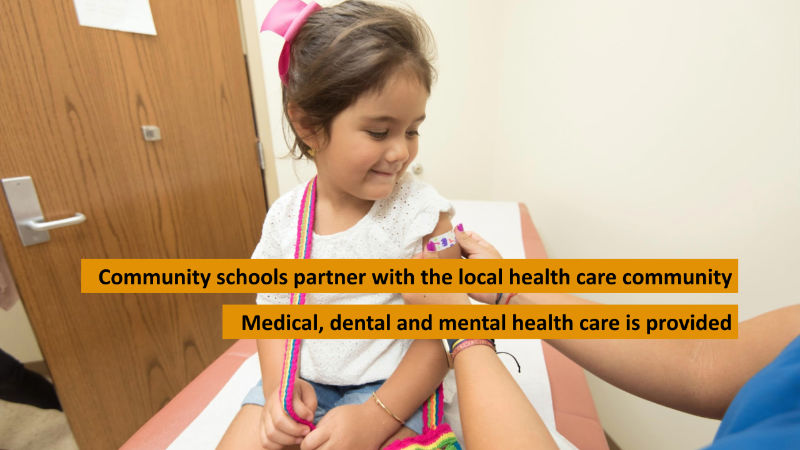
Partnerships with the local health care community form a school-based health center with:
- Medical care
- Dental care
- Mental health care

The prevention and treatment of problems associated with ACEs and trauma can be implemented throughpartnerships with the local behavioral health care community. Epidemic rates of ACEs can be acknowledged and addressed with a robust network of school and community-based mental health care professionals, along with agencies providing emotional support.

Community schools acknowledge and address food insecurity by forming partnerships with local food pantries and then creating a school-based pantry with parent-friendly hours for both work-at-home and working onsite parents.
Community schools also can form partnerships with housing security programs to link those with housing insecurity challenges to rapid-rehousing and affordable housing.
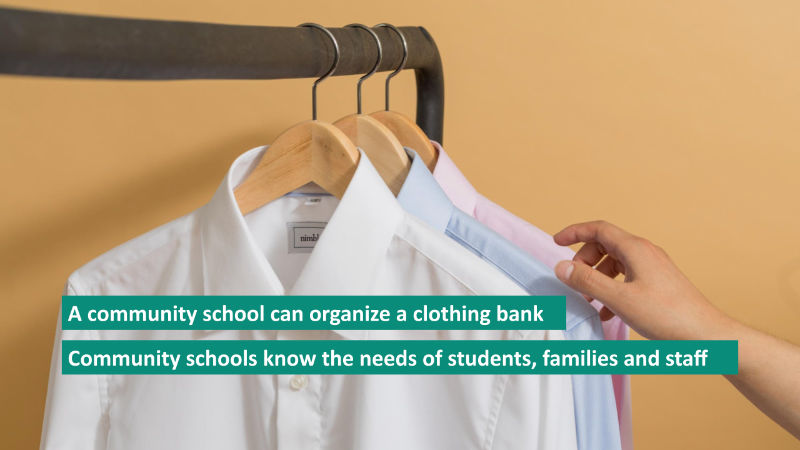
Community schools can partner with retailers and second-hand stores to create a school-based clothing bank for students and family members.

Community schools know from parent and student surveys that transportation to vital services keeps people from connecting. Schools build relationships with county, city and regional transport agencies to address gaps in transport.

Community schools build partnerships with early childhood learning programs, acknowledging the seamless system of learning from early childhood to kindergarten. Some schools can work to co-locate programs.
Schools also partner with local parent programming staff to link parents to child care, parent education and home visitation programs.

Partnerships with local mentoring and tutoring organizations are part of the community schools model.

Partnerships with book sellers and authors create a robust learning environment. Book banks in addition to fully-resourced school libraries enrich all students and family members.

Community schools engage with local cultural, arts, civic and professional organizations, as well as local health councils and coalitions. The goal is to create a network of engaged stakeholders invested in the success of the school and all students.

REFLECTION QUESTION: Which partners and providers are the easiest to link the school to? This can lead to asking which partnerships are the most challenging, why and how to remedy that.
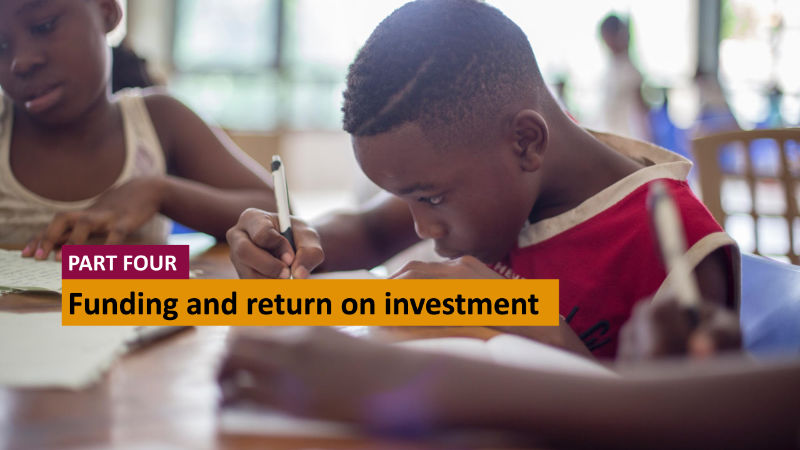
PART FOUR: Funding and return on investment
The goal is to conduct informational interviews with school board members, district leadership, and representatives from state, county and city government to better understand the capacity of each level of government to support the development of a community school. As one creates a plan, the return on investment is also developed.
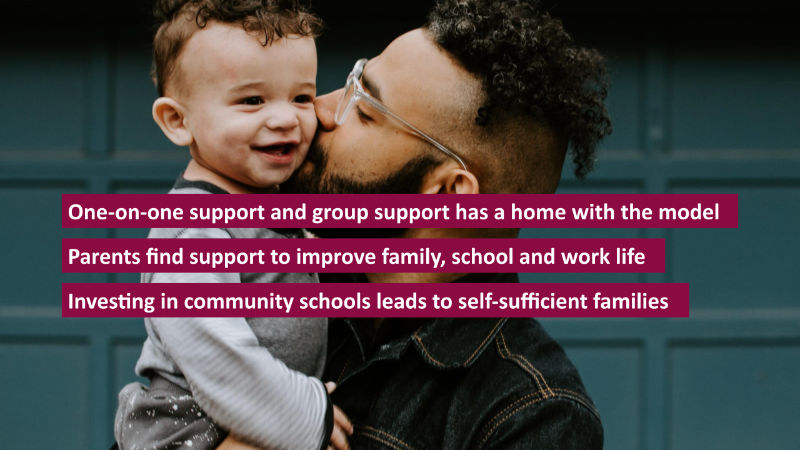
The return on investment arrives in the form of successful students and self-sufficient families that feel a sense of empowerment and care within the community school.
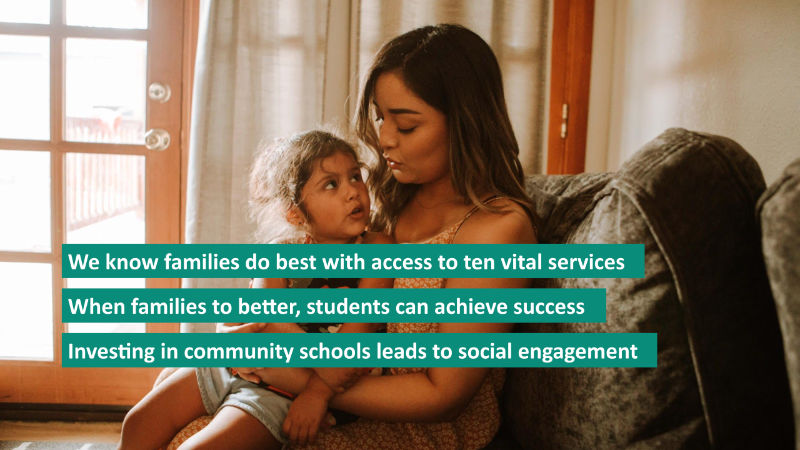
We can see, from decades of research focused on the social determinants of health, that by investing in vital services we improve the health, safety and economic outcomes of all students and parents.
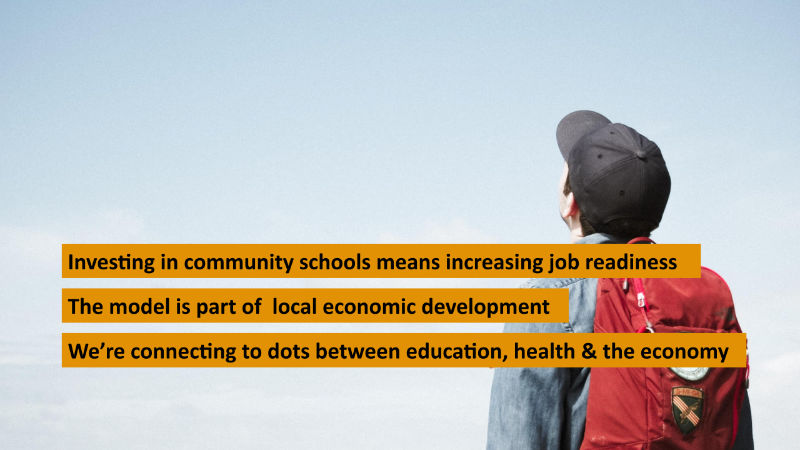
Community schools are part of local economic development
We can see how investing in the model gives each county the best opportunity to support job-readiness and a productive workforce.
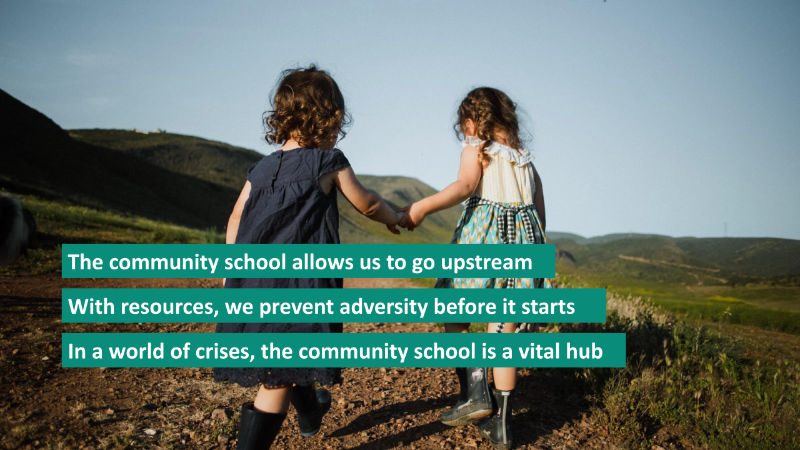
Community schools go upstream, preventing challenges before they start
There is no easier place for students and their families to access services than the school. With robust services supporting a healthy learning environment, our community schools have a vital role in public health, public education and economic development.
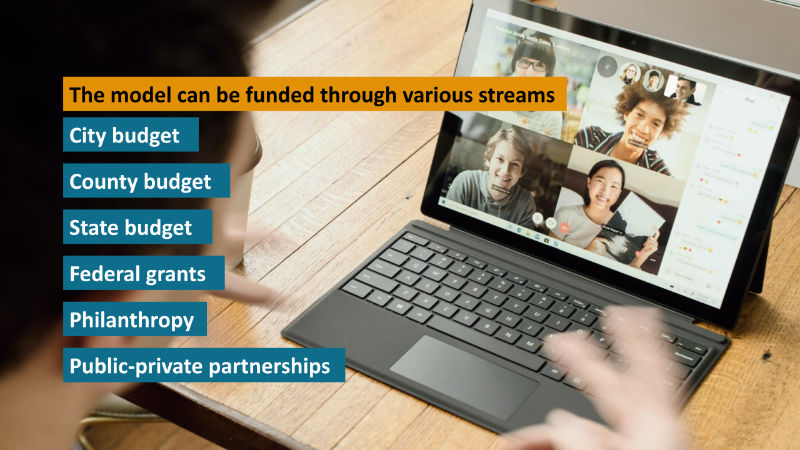
Funding formulas exist for community schools
There are as many funding formulas as there are community schools. The community schools director, working with school, district, city and county leadership, identifies and secures sustainable funding. The private sector can also be engaged to support various elements of a community school.
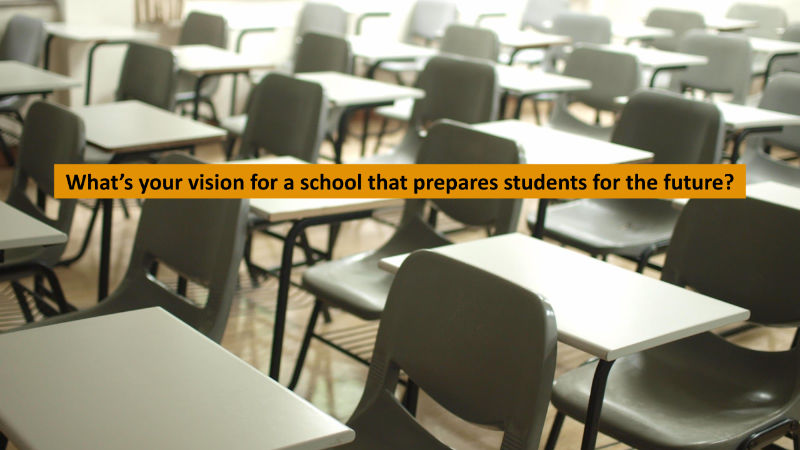
The community school model is part of the 100% New Mexico initiative “Framework for Change” guiding county-based efforts.

What’s your vision for a school that prepares students for the future?

Change is possible in profound ways as we move from a world of “no, we can’t do that” to one where local stakeholders commit to, “Yes, we can.” It is this commitment to 100% of our children that drives our work within the initiative.
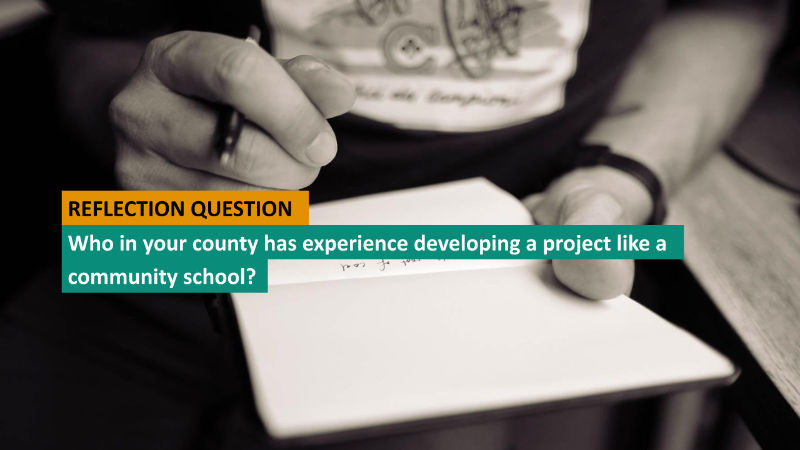
REFLECTION QUESTION: Who in your county has experience developing a project like a community school?

NEXT STEPS: Reflect on the presentation and your notes. Review the books and links to research provided. Reach out to colleagues, friends, family, neighbors and local elected leaders to discuss the 100% New Mexico initiative. We have designed this presentation so that it can be used with local elected officials within city and county government and school board members, agency leaders (representing the ten vital services), representatives from local higher education, faith-based and community-based organizations and your neighbors and friends.
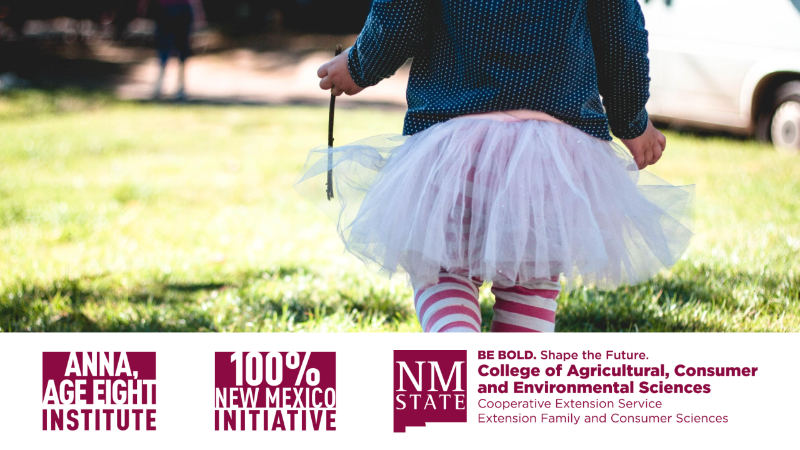
Consider registering for the next 100% Power Hour 7-part webinar series to learn more about the 100% New Mexico initiative. We hope to see you there. For any questions about the webinar series, the initiative, research guiding the process or practical steps in starting the initiative, please contact us annaageeight@nmsu.edu.
Additional Resources
Research
Explore Our Research Pages

